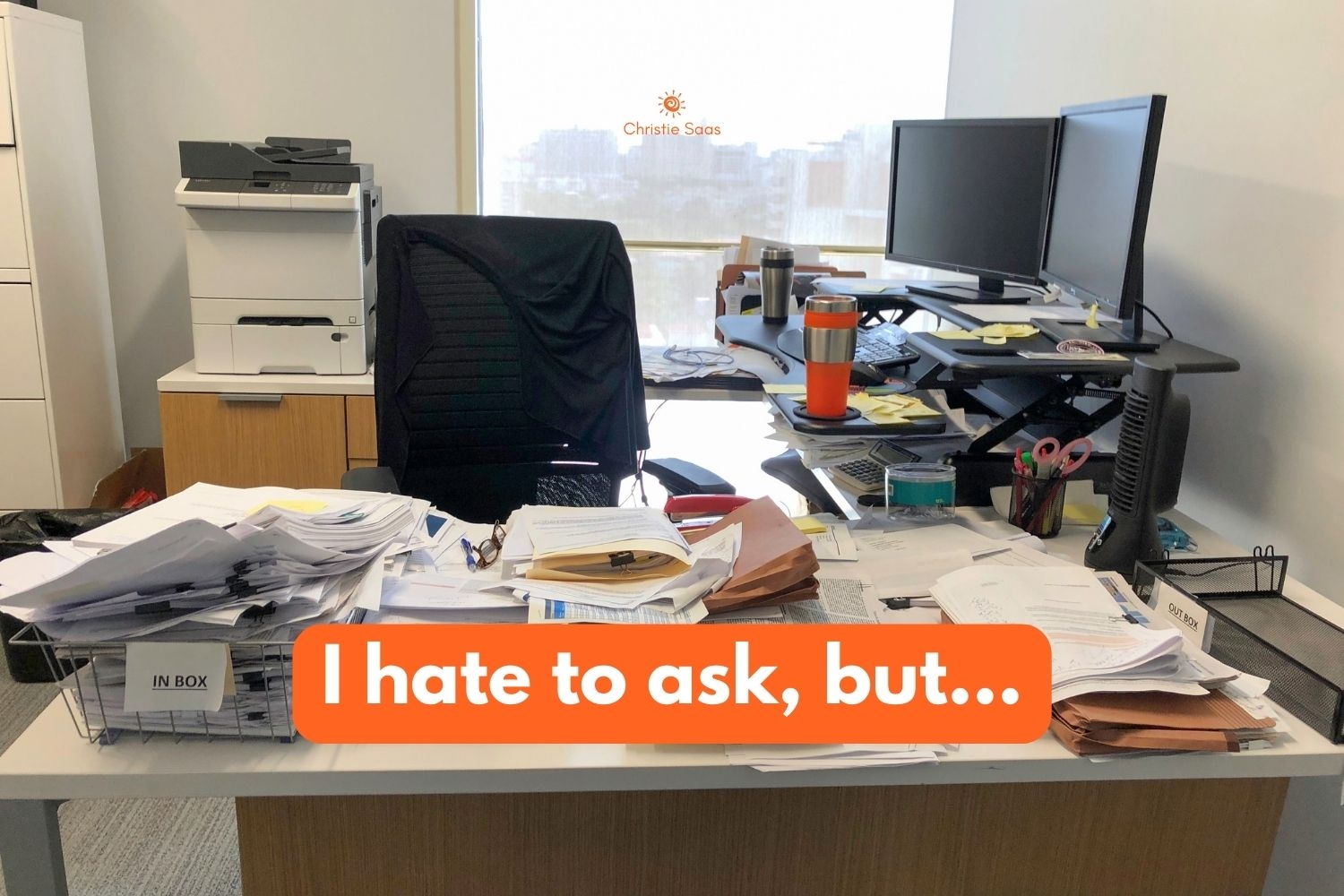I hate to ask, but...

Does this sound familiar? Its late on Friday afternoon. You're trying to wrap up the work week before you leave for the weekend, then an email pops up in your inbox. A request for a letter of support.
Whatever you have time to provide, right?
The request comes from a group that does important work and an executive director you like. They apologize for asking on short notice but explain that they need the letter of support for a grant application that is due tomorrow. Could you send a letter of support today?
You don’t want to leave them stranded but geez, it’s an hour before quitting time.
You have three choices.
- Reply and explain that due to the short notice, you won’t be able to provide a letter before their deadline. Then spend your whole weekend feeling like a jerk.
- Work into the evening to write the letter, spending hours to get it perfect, missing family movie night. Then spend the weekend feeling like a jerk.
- Pull out your trusty letter of support template, bang out a good enough letter of support in under an hour, and email it back. Then spend the weekend forgetting all about work!
Here is my go-to template to write a very quick letter of support. Copy this blog into a document on your computer for when you get those last-minute requests.
Paragraph #1 is 1 Sentence
One simple sentence that notes you are ‘happy to be providing a letter of support’ for [insert name of non-profit you are supporting].
I am pleased to provide a letter of support for the XYZ Youth Centre’s application for funding for a Summer Day Camp Access Program.
Paragraph #2 is 3 Sentences (OK, 5 if you're wordy.)
First, write something positive about the services provided by the non-profit you are supporting. Then write 2-3 more sentences about the good the non-profit is achieving with those services. Not sure what to write? Go to their web site (or social media pages), see what they’ve already written, and pull from there. No need to invent from scratch.
The XYZ Youth Centre is a leader in providing safe and empowering programming for children from low-income families. Making true connections to families facing financial hardships isn’t accomplished from behind a desk. The XYZ skilled outreach team prides itself on getting out of the office and into schools, shelters, and community centres to work one-on-one with youth. This provides an opportunity to identify immediate client needs, match sponsorship dollars to high demand areas, and make sure no families are forgotten.
Paragraph #3 is 3 Sentences
Paragraph #3 follows the exact same format as the one before except this time you aren’t writing about the non-profit’s services, you’re writing about the specific project of their grant application. First, write something positive about the specific project you are supporting. Then write 2-3 more sentences about the good this project will achieve. Not sure what to write? Pull from the email they sent to you explaining about the project and the grant for which they are applying. You don’t need to come up with fresh material. Use what you have.
Traditional summer day camp programs are often out of reach for low-income families, leaving youth without safe or quality summer activities. Paying for childcare or urban day camp programs during the summer, comes with a price tag that is usually too costly for families struggling to put food on the table. The XYZ Youth Centre eliminates barriers by paying for registration fees, providing safe transportation to and from camp locations, stays on location to act as the adult point-of contact, and provides lunch or snacks for youth participants. Youth benefit from a summer filled with fun activities and parents benefit by knowing their children are safe and family finances not impacted.
Paragraph #4 is 3 Sentences
Stick with me now! You’re nearing the end. This paragraph is easy. Three simple sentences where you are matching your non-profit to the non-profit you are supporting. First, write something that your non-profit believes in that matches the project you are supporting. Second, write why its important. Finally, write something about how the non-profit you are supporting is going to deliver that exact outcome through this project.
Bright Valley Organic Farms believes in providing the raw ingredients to help youth reach their full potential. Building tomorrow’s leaders starts with building healthy youth today. The XYZ Youth Centre’s Summer Day Camp Access Program is instrumental in ensuring youth have every opportunity to grow and succeed regardless of financial barriers.
Paragraph #5 is only 1 Sentence
A simple one-sentence paragraph to wrap up the letter and confirm that you support the non-profit and their project.
Bright Valley Organic Farms is pleased to support the XYZ Youth Centre’s application for funding for a Summer Day Camp Access Program.
That's it!
That’s it, you did it, but wait, I want you to do one more thing before you send your letter. Don’t worry, it’s easy. I want you to read it out loud. Since you will be writing this at the last minute and don’t want grammar or spelling errors, this is one final proofing piece, so YOU look good.
Make all your corrections, make sure the letter is on letterhead, add a digital signature if you have it, save as a PDF, then send off a great letter of support – oh, and then, enjoy your weekend!!
Your turn.
Your turn. How do you handle last-minute requests for letters of support? Do you have a go-to template that you use? I want to know! Please use the form on the side of the page to let me know, ..or send me an email, ..or message me on socials.
-Christie
…
Hi, I'm Christie. I help executive directors develop the systems and processes needed to run a non-profit.
I learned early in my career, there is no non-profit school. Browsing the internet for resources from big-city experts doesn’t provide practical solutions to balance the budget, write a work plan, or conduct an employee evaluation. Leadership development tips don’t really resonate when you are also taking out the recycling and cleaning the washroom.
I created ChristieSaas.com so non-profit leaders never need to wonder how to do the job – no matter how big or small that job is.
I have been the executive director of small-team, small-budget, non-profits for 20+ years. My experience isn’t theory. It is the real, operational, and practical solutions I use every day.
I love my work and I want to help you love yours too.
© Christie Saas 2023 All Rights Reserved
…
Want to learn more?
Start with one of my free resources.


